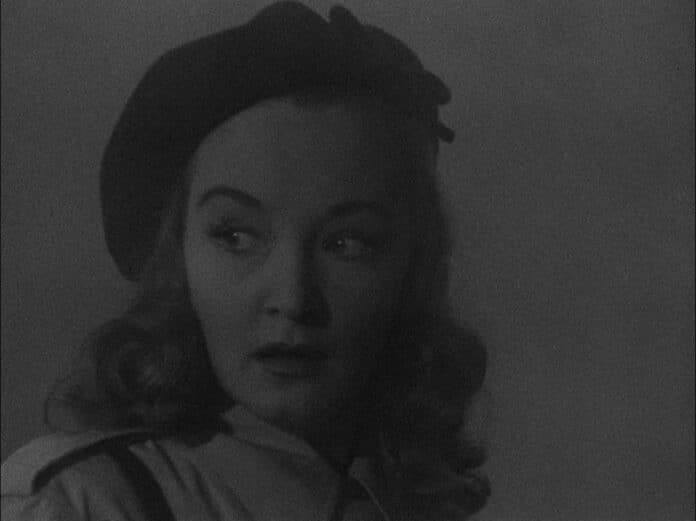Now that I have a region-free Blu-ray player, I’ve been able to cycle through my Columbia Noir boxsets. Film noir is a genre I’ve always loved, and these lesser-known movies have really opened up a whole new world to me. And right out of the gate, the very first movie on Columbia Noir #1, Escape in the Fog, had my mind racing. It was an abnormal film, even by noir standards. While its espionage plot feels familiar and its romance seemingly lacks spark, the film opens with a dreamlike sequence that completely colors how we read the rest of the film. And I sort of haven’t stopped thinking about since I watched the movie.
Notice I used the word “dreamlike,” despite the fact that the opening scene is very much someone’s dream. Let me explain. Or, perhaps, let’s allow Iris Veysey to explain. She wrote the essay “It Came Out of the Fog,” which is included in the Columbia Noir #1 boxset. And she provides the foundation for today’s insight into film noir:
Dreams are integral to Escape in the Fog, and the film opens with a nightmare. It is night and we see Eileen walking through a dense fog. She is startled by a passing policeman who ominously warns her, ‘You never can tell what will come out of the fog.’ A taxi pulls in and a group of men tumbles out. There is an altercation and one of the men pulls a knife, at which point Eileen screams and wakes up.
Iris Veysey
This nightmare will prove to be prophetic. Eileen’s dream becomes the key to unlocking the intrigue at the heart of Escape in the Fog, and Barry accepts with relatively little scepticisms. This may seem curious – why would dreams be taken seriously in a case of international espionage? – but the world of film noir is steeped in matters of dreams and the subconscious. Dreams are vital components of noirs like Strange on the Third Floor (Borin Ingster, 1940), Strange Illusion (Edgar G Ulmer, 1945) and The Dark Past (Rudolph Maté, 1945), in which they play out past traumas or foreshadow future events. Mark Osteen links this phenomenon to a crisis of identity, suggesting that noir dreams ‘stage a collective neurosis’ in wartime America. Escape in the Fog takes place in a time of global conflict, in which realities are constantly shifting and the truth is often obscure. With this in mind, it is perhaps less surprising that Eileen turns to dreams to make sense of her situation.
This helps us position film noir as a movement. It’s easy to get caught up in the genre’s often convoluted plots, keeping track of all the twists and turns, but I think it’s more important to remember why the plots are so convoluted. In a way, a film noir’s plot mimics a dream—a disconnected series of events that, inevitably, comments on something very specific: you and your make-up; why you act the way you do, and why you think about the world in the way you do. That sense of unease, of waywardness is simply part of the human condition. But back in 1945 when Escape in the Fog was released, the country was swept up by war, and there was a unified waywardness across America’s collective neurosis.
Thus, the aesthetic that shapes many film noirs, including Escape in the Fog, is one of someone wandering a dream and trying to find direction. To apply real-world logic to Escape in the Fog—to wonder why Barry would trust Eileen’s dream—is missing the point. Because if this film, and film noir in general, is meant to represent his and her and the rest of America’s collective subconscious, then of course he trusts her dream. Barry and Eileen and the entire unfurling story of this intricate plot are part of this aesthetic; they are representatives of the collective neurosis that feels like it’s living in a dream state, that is having troubling finding direction and making sense of something so bizarre yet undoubtedly real.
This is a great mental approach to not only better engaging with film noir, but better engaging with movies in general. Personally, I’ve never cared to analyze plot threads and narrative logic because it gets in the way of something deeper. Movies aren’t based in our reality, and instead serve as representations of truths we deal with in reality. In a way, the more absurd the dream logic of Escape in the Fog becomes, the more directly the film embraces the very aesthetic that defines it and gives it power and allows it to comment upon that collective neurosis.

